KEV COX
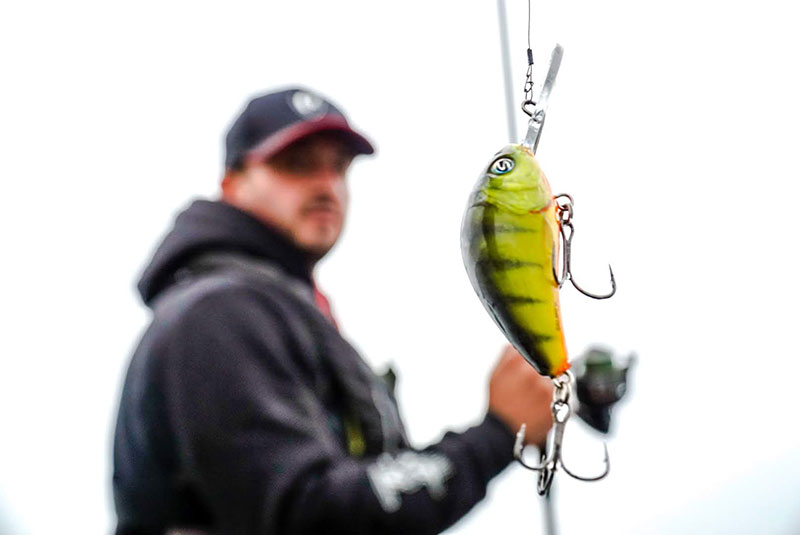
“Crankbaits aren’t everyone’s cup of tea. Especially not on big reservoirs like this one. But that’s exactly what gives me the edge when using them,” says Fox Rage/Salmo Consultant Kevin Cox as shows us why he never leaves his Salmo lures behind when he ventures out in search of the big predators that inhabit our big reservoirs.
It’s 8am and a very crispy cold morning here on Grafham water. We set off from the Midlands at 5am to travel down to meet Kevin when the temperature was 12 degrees, but by the time we arrived at the popular Anglian Water fishery, that has plummeted down to 2 degrees. A shock to the system for us when we got out of our warm cars, we just hope that it hadn’t been too much of a shock to the fish as well.
After a quick conversation with the fishery rangers, we put on our life jackets, load the boat and head out to one of Kevin’s favourite features on the reservoir - one of the two pumping towers on the lake and the closest one to the boat house.
“I never go to a fishing session without my Salmo lures” explains Kevin as we power towards the pumping tower. “I didn’t always use them in my fishing, but I have learned from experience that hard lures can really make a difference on days where fish are either pressured by soft plastic lures, or where conditions just require you to change your tactics.”
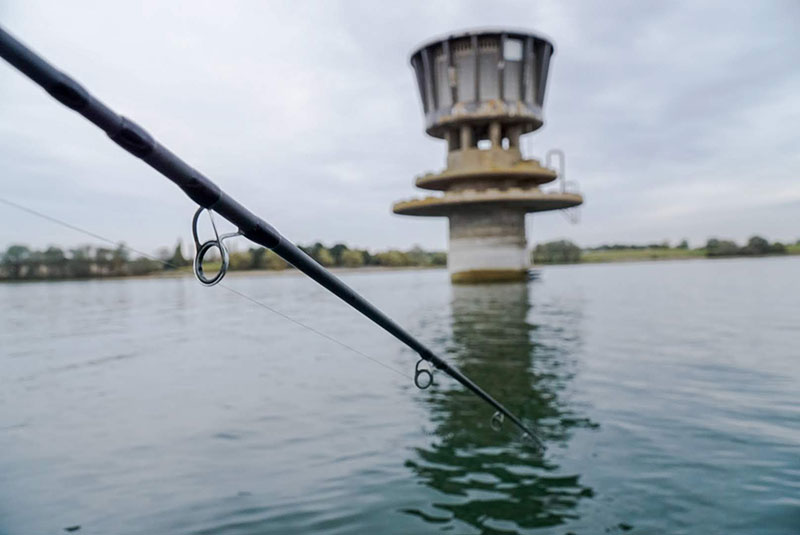
Conditions at the pumping tower were flat calm
Arriving at the pumping tower, we come across another boat where anglers have caught perch on drop-shot tactics. Kevin always has a few rods set up on his boat with different lures. As a lure match fishing angler, he takes no chances and is used to bringing everything that he needs plus a few more things that are there “just in case”. “I’ve been on a boat recently and we had seven rods on board!” he tells us. “You can’t take any chances during a high-pressured situation like a match, so having rods ready to go really saves time on the day”.
“Because the lads on the boat are catching on drop shot tactics, it shows that the perch are slightly up in the water. I usually start with soft plastics here but will give the Salmo Rattling Hornet 6.5 a try. I’ve had some great perch, pike and zander on this lure over the last couple of years fishing these big reservoirs as well as on the rivers.”
So how would you approach a big water like this with hard lures for someone that hasn’t used them before?
“First off, and to make your life easier, look for features that stick out of the water. Cast past the features, as we’re doing with this pumping station now, and crank the lure down to get it to its maximum depth and keep varying the depth until you find where the fish are feeding”
So how do you vary the depth of this kind of lure?

A mix of colours, sizes and diving depths is key to find and catch predators on these waters
“Every crankbait is tuned differently, and the varying spinning/trolling depth is labelled on the box. I know how my lures work as I’ve used them that many times, but as a beginner, my advice would be to write down the spinning/trolling depth on the lures with a marker, and you can expect to achieve somewhere in between depending on the conditions and tackle you use. Trolling is moving the lure under the power of a boat, so they run deeper, spinning is the usual bringing it in under the power of cranking the reel. It’s a great tip to start off with, but you’ll soon learn your lures the more often you use them”.
After casting lures on and around the pumping towers, we decide to move on to another location on the water and fish the shelf on the far side, opposite the boat house.
It’s an unusually calm morning for Grafham. There is hardly a ripple on the surface and all is still… on the surface at least. Coming to this reservoir, you are very likely to get water in the boat from waves and get blown about by cold winds, so always prepare by bringing clothes that will keep you warm and dry.
“We are now casting to the shallow edge of the lake and cranking the lure down to run it past the drop off where the water deepens. This is an excellent place to try crankbaits.” Kevin tells us.
There are tons of fry in a reservoir this size, and you’ll find most of them in the shallow water in the margins because this is where they feel safe. The predators know this so will move in and trap them against the bank when they’re on the feed, or they’ll lay just where the water deepens waiting for any unsuspecting fish to swim into the deep water and ambush them.

“If you’re fishing the shallow part then you can still use a lure like the Hornet 6.5, but just don’t crank it down too deep. Once you feel the lure bump the bottom then you just stop the cranking and let the lure come to the surface. You can keep doing this quickly so the lure just works a foot or two off the bottom, which runs it past any predator’s face if they’re in the margins waiting to ambush.”
Another lure that is ideal for the shallows is the Slick Stick. This amazing little lure is the perfect imitation of the abundant fry found in the reservoir, and if there’s a predator about patrolling the shallow water in the margins, hold on tight to your rod.
After a few passes along the margins with no bites, Kevin decides that it’s time to move on again. The sun is shining on this cold winter morning, and we set off yet again in search of these elusive predators.
“These reservoirs are huge, and the shoals of prey fish are constantly on the move. You always have to keep checking your fish finder if you have one, or just keep moving, looking for the tell-tale signs like birds diving into the water, fish topping or just head to the end of the lake that is being churned over by wind.”
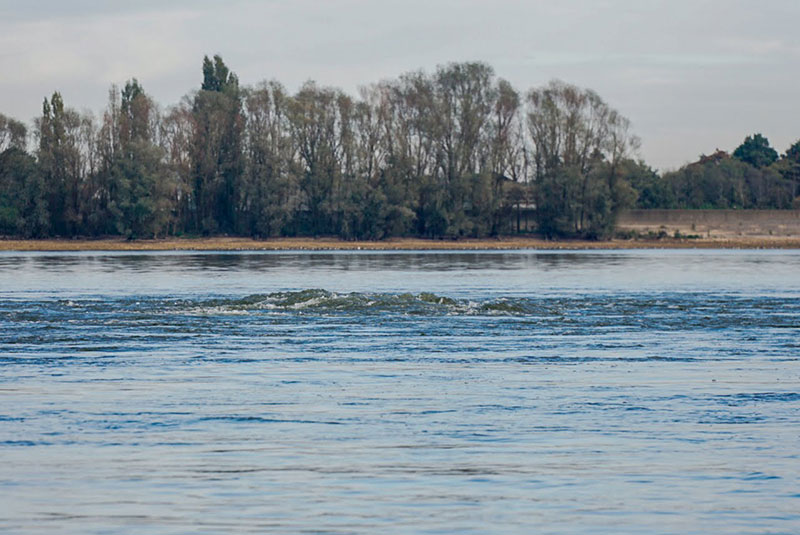
The boil is a brilliant feature when it's on
Today, Kevin explains that we’re heading to a feature that he’s never fished before known as “the boil”. “The boil is just water being pumped into the reservoir from a river” Kevin tells us, and it creates a huge disturbance in the water as you can see.”
This feature certainly stands out. It makes this part of the reservoir look like it has an underwater volcano that’s about to erupt, with water bubbling away and causing a powerful current that constantly tests the boat’s electric motor.
We position ourselves about 30 meters from the centre of the boil and instantly the fish finder starts to show huge shoals of prey fish. “There are so many fish around the perimeter of this water pump that it’s sending the fish finder mad!” Kevin tells us.
After casting about with a Hornet it was clear that the flow was too fast for the Hornet 6.5, so Kevin stepped up to a slightly bigger lure to see if there was anything feeding mid water, opting for a Salmo Freediver to do the job. After many casts with the crankbait it was clear that the bigger fish were hugging the bottom of the reservoir and even a deep diving crankbait like the Freediver would not be able to get to 40 plus feet down.
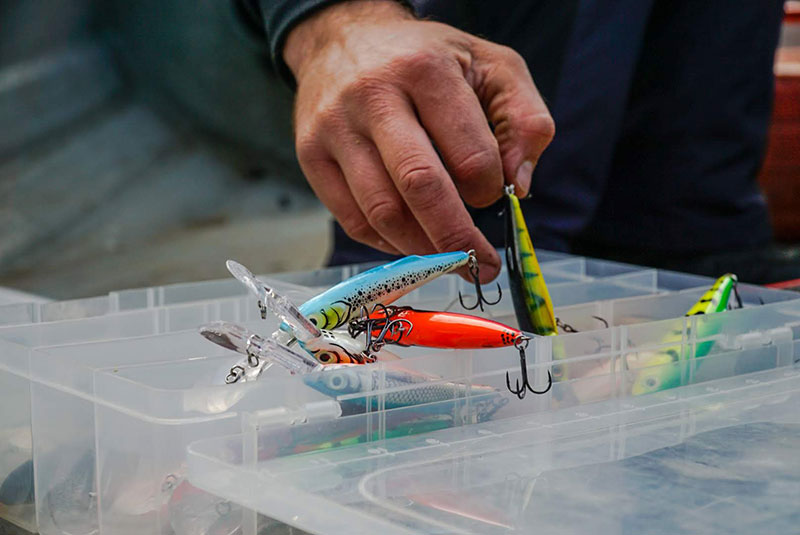

The Salmo Freediver has a large bill for getting down deep
“I’ve caught them on Salmo lures on days where the shoals of fish are higher in the water, but today they don’t seem to be in the mood and I think these bright calm conditions have a lot to do with keeping the fish down on the deck. Maybe as the sun dips or if we get a bit of wind and cloud, we could definitely see a change in how they hunt and they’d be up for a chase higher in the water. You just have to keep trying until you crack the code.”
It was now 4pm and just as the sun began to dip, a cold wind swept over the water and finally there was a ripple on the surface. “This is just what I’ve been waiting for” says Kevin. “I think we’ll head back to where we started at the pumping tower and cast a Hornet about. I’m sure they’ll be on the feed now”.
The ride to the pumping tower felt like a tense final battle scene. Even with the sound of the motor, the cold wind on our faces and the lashing waves; it was as if we were riding in total silence. Heading back to a last stop to meet our fate. There was a look of confidence on Kevin’s face which was reassuring. He was the captain of this boat, and we were going to find the treasure he’d been searching for all day.
Not long after positioning us close enough to get a decent cast past the tower, Kevin pulls out the Salmo Hornet Pro rod, with his favorite lure for this kind of water; the Salmo Hornet 6.5 and whips the lure right past the tower but close enough that the lure almost bumps the structure on the retrieve.
It was like watching in slow motion. The tip of the finely tuned rod was tense from controlling the retrieve of the lure. The Hornet didn’t even make it a meter in front of the tower when Kevin shouted “YES!” and we could see the rod arch over and the reel drag began to make that unmistakable clicking noise as the fish tore line off it in a bid for freedom.

The Salmo rod cranked over on the take
“I had a feeling we’d get one here at this time of day, but I never expected it on the first cast back!” says Kevin, as he controls what looks like a fantastic perch heading in towards the landing net. “This is the action we came for.”
Moments later, a stunning perch was in Kevin’s hands for some quick photos before going back to fight another day. “I think this one is around the 2lb mark, but there are much bigger ones down there, so we’ll keep casting”.
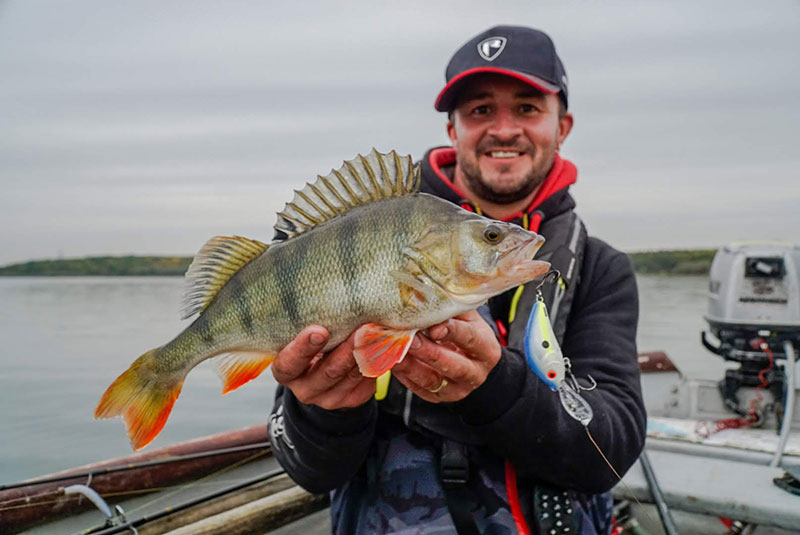
What Kev was after
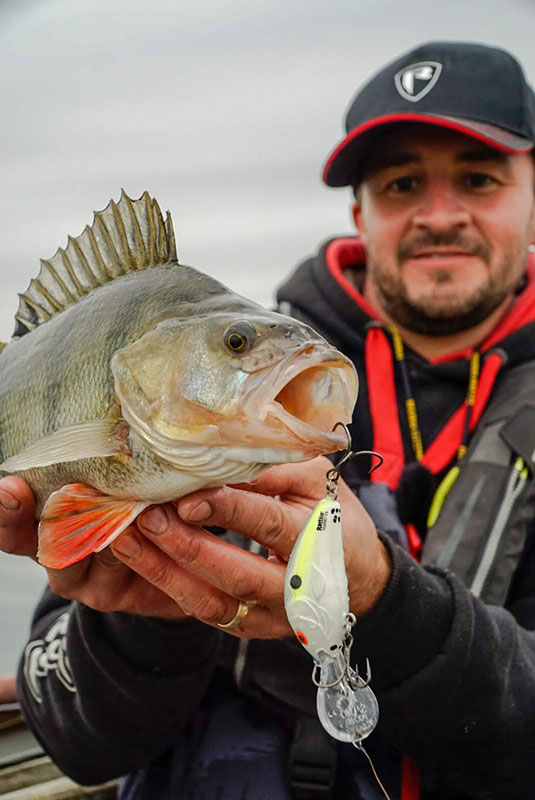
The Hornet was a proper mouthful for this perch
We notice that Kevin made the switch to a different version of the Salmo Hornet when he caught this fish. The Hornet that fooled this perch was the Rattlin’ Hornet Floating 4.5, in Sexy Shad colour. “People have been catching on small shads today, and there’s an abundance of fry in the water so I think they are tuned in to feeding on smaller prey” Kevin explains. “That’s why I scaled down and chose this version of the Hornet”. Fished correctly, you can expect this lure to dive to around 12 feet. In around 25 - 30 feet of water, this means the fish have started to move up in the water and become a bit more active as the light levels drop and the wind picks up.
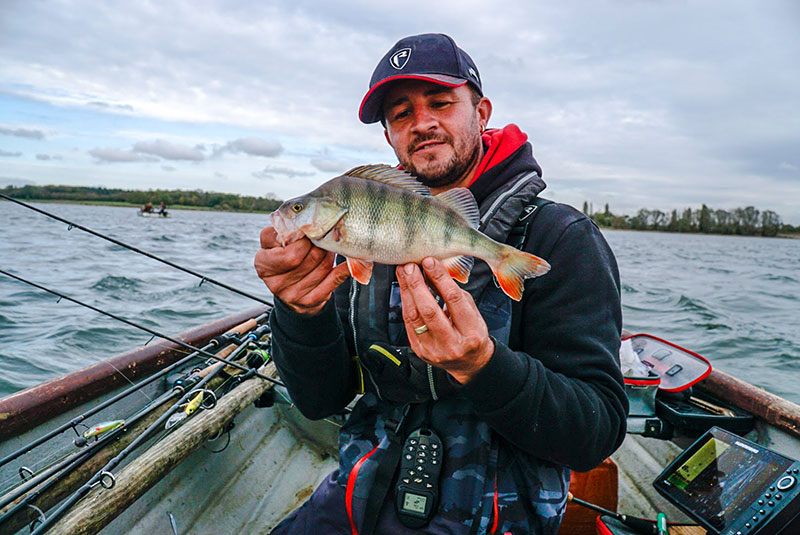
You have to make the most of small feeding windows in winter
After a few casts, Kevin manages two small perch on the same lure before the feeding spell ends and the fish head down into the depths. It was then time to call it a day and so we headed back to the boat house. “We were up against it today, but that change in weather from sunny to cloudy with a little headwind really made a difference,” Kevin tells us, “Just like the big reservoirs, these lures aren’t everyone’s cup of tea. But for those that know how to master them, there are great rewards to be had.”
Fishing these huge reservoirs is no easy feat. It requires a lot of patience, persistence and really tests your skills as an angler. You can help yourself by embracing technology like fish finders and electric motors, but that doesn’t come at the expense of not using watercraft to locate fish or reading the conditions to make your own judgement. It still takes a lot of skill to master such huge expanses of water - and from what we’ve seen, having the right lures with the right balanced tackle will definitely help you to conquer these often unforgiving waters.
Kevin’s rod of choice: The Salmo Hornet Pro (Light/Medium depending on lure choice)
Kevin’s lure of choice: The Salmo Hornet/Rattling Hornet (variety of sizes/colours/action used on the day)
Kevin’s reel of choice: Fox Rage Prism C2500






